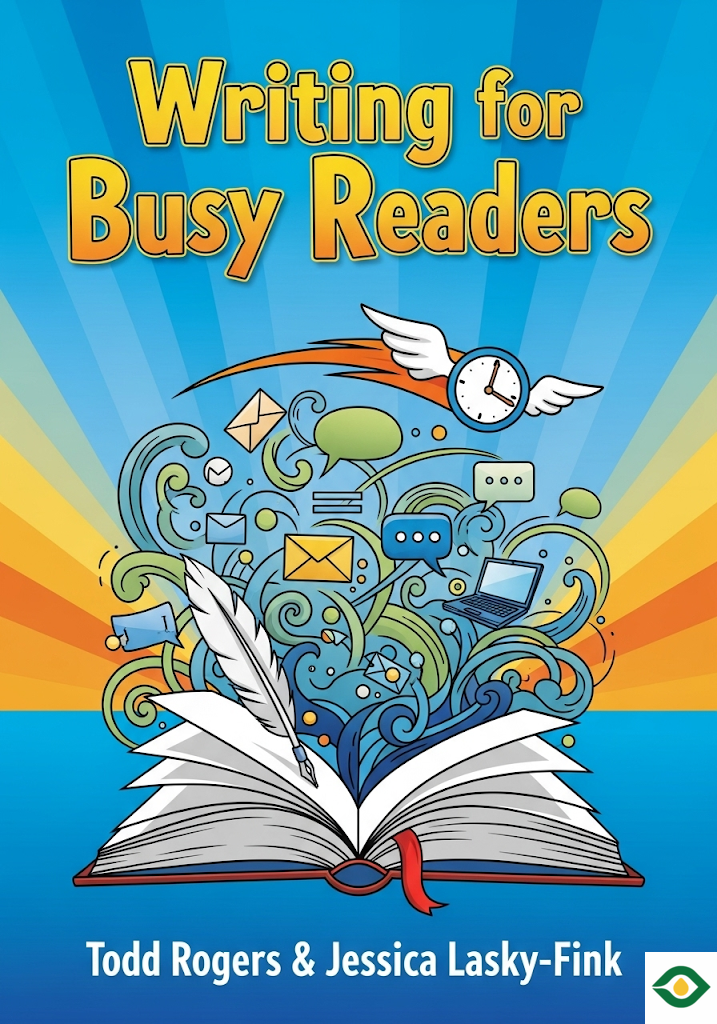Description
We live in a world that never stops talking. Phones buzz, inboxes overflow, and notifications pop up every few seconds. It feels like everyone is shouting at once, and there’s hardly time to pay attention to it all. In this noisy digital space, writing has become one of the most powerful ways to reach people. Yet writing is also one of the hardest skills to get right. Many messages go unread, misunderstood, or ignored. But with the right approach, writing can stand out and actually get busy people to listen.
The first thing to understand is that writing is everywhere. A quick text, a short email, or even a sticky note on the fridge are all examples of writing. Most of us write dozens of times each day, whether we realize it or not. But simply writing words is not enough. The real goal is to make the reader pay attention, understand quickly, and ideally take action. That might mean replying to an email, clicking a link, showing up for a meeting, or simply remembering what you said.
Effective writing has two key ingredients: clarity and purpose. Clarity means making your words easy to understand. Purpose means knowing why you are writing in the first place. Without these, even beautifully written messages will be ignored. Imagine inviting a friend for dinner. You wouldn’t send them a full essay. You’d send a short, clear note with the time and place. That’s the power of clear writing—it respects the reader’s time.
Real-world examples show how much clarity matters. Companies have lost money because emails looked boring and no one opened them. Confusing ballots have led to voters making mistakes on important issues. Unclear language doesn’t just waste time; it can also change outcomes in ways that really matter. On the other hand, simple, clear words can create opportunities, inspire action, and make readers feel confident in what they’re reading.
Understanding your readers is just as important as understanding your message. Readers are busy, distracted, and often juggling multiple things at once. Studies show that our brains can only focus on a handful of items at the same time. When people read, they make quick decisions: Should I read this? Should I read it now or later? Should I skim or read fully? And finally, should I do something about it? Most readers skim, skip, and decide in seconds. This means your writing needs to respect how little time and energy they have.
Good writing starts with having a clear goal. Before writing anything, ask yourself: What do I really want the reader to know or do? This goal acts like a compass, guiding every sentence. Without it, writing can easily wander off-track. Editing and rewriting are essential for sharpening that goal. Each draft should get you closer to expressing your main idea as simply and powerfully as possible. A clear purpose also makes your writing feel intentional, and readers can sense that.
Once you know your goal, you can use proven principles to make your writing effective. The first principle is that less is more. Long, heavy text makes readers lose interest. Shorter, sharper messages work better because they demand less energy. Every extra word risks being ignored. Ruthless editing helps cut the clutter and highlight what matters.
The second principle is to make reading easy. That means using simple language instead of complex terms, short sentences instead of long ones, and words that most people already know. When language is easy, readers don’t have to struggle, and they are more likely to stay engaged.
The third principle is to design for navigation. Busy readers don’t read word for word; they scan. To help them, structure matters. Break text into smaller sections, highlight important points, and group related ideas together. Simple layouts make it faster for readers to find the information they need.
The fourth principle is formatting. A little bold text, some bullet points, or headings can guide the eye. But too much formatting becomes distracting. Use it carefully to emphasize what is truly important, not to decorate every line.
The fifth principle is relevance. Readers need to know why your message matters to them. Frame your writing in terms of their needs, not yours. Show them the benefit of paying attention. People are more likely to read and respond if they see direct value.
The sixth and final principle is to make responding easy. If you want someone to take action, reduce the effort required. Provide clear instructions, remove unnecessary steps, and make the action quick. The easier it is, the more likely people will do it.
Of course, applying these principles in real life is not always simple. Sometimes you have a lot of information to share and worry that being too brief will leave things out. The solution is balance: keep the main message short and place the extra details in attachments, links, or appendices. For longer documents, the same rules apply—clear structure, simple language, and helpful formatting guide the reader through even complex material.
Another challenge is when writing for different audiences at the same time. The safest approach is to use inclusive language that as many people as possible can understand. Avoid jargon unless you’re sure the readers are familiar with it. If your audience includes experts, then technical terms may be fine. But if not, simpler is usually better.
The choice of communication channel also matters. A text message, a memo, and a social media post each have their own style. But no matter the medium, the principles stay the same: be clear, be simple, and respect your reader’s time. Shorter and sharper always wins when people are overloaded with messages.
Writing well is not about following rigid rules. It’s about understanding your readers, knowing your purpose, and adapting these principles to your situation. There is no single formula that works every time. But practice makes progress. The more you apply these ideas, the more natural they become, and the more effective your communication will be.
In the end, writing for busy readers is about kindness. It’s about respecting that people have limited attention and limited energy. When you write clearly, you are helping them. You are making their lives easier. And in return, your message stands a much better chance of being read, understood, and acted upon.
Words matter, but how you use them matters even more. With purpose, clarity, and the six principles of effective writing, anyone can cut through the noise. Whether it’s an email, a report, or a quick message, the right words can reach even the busiest mind.





